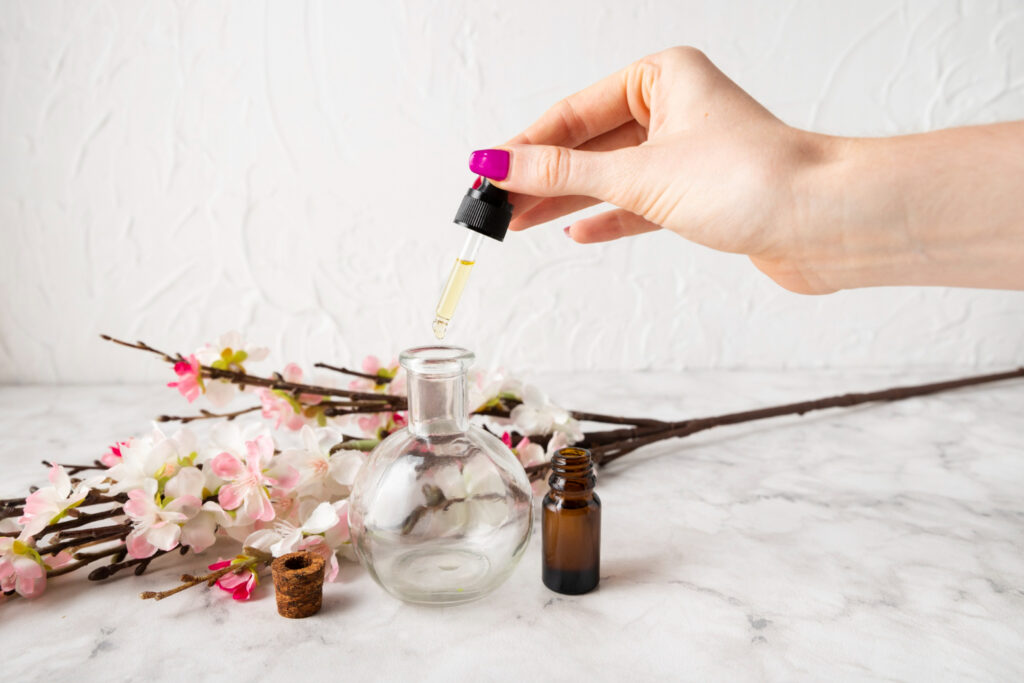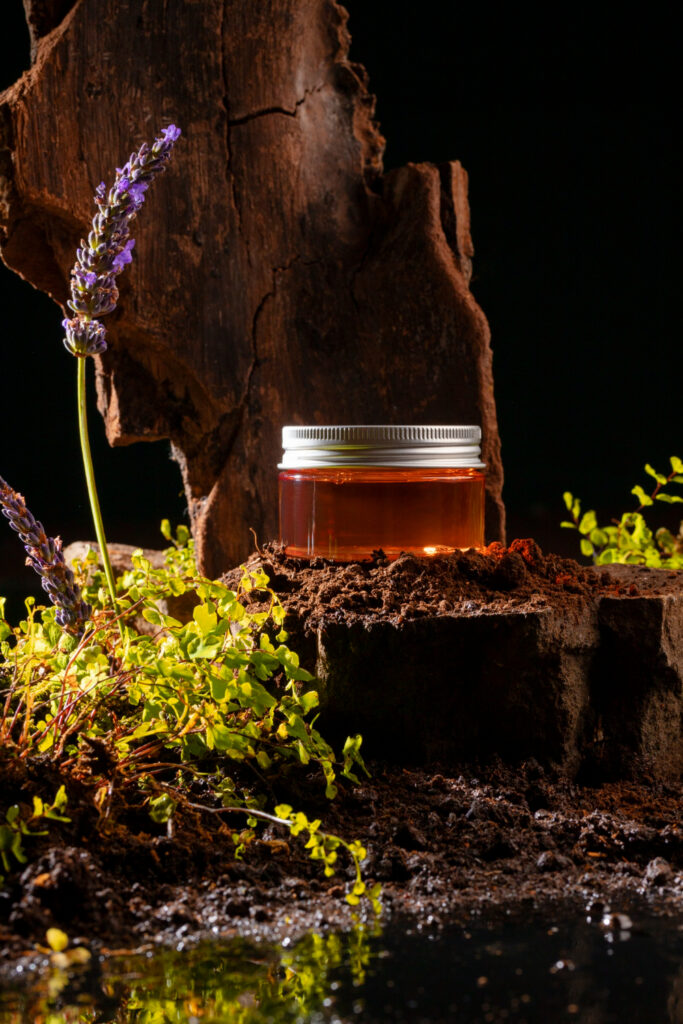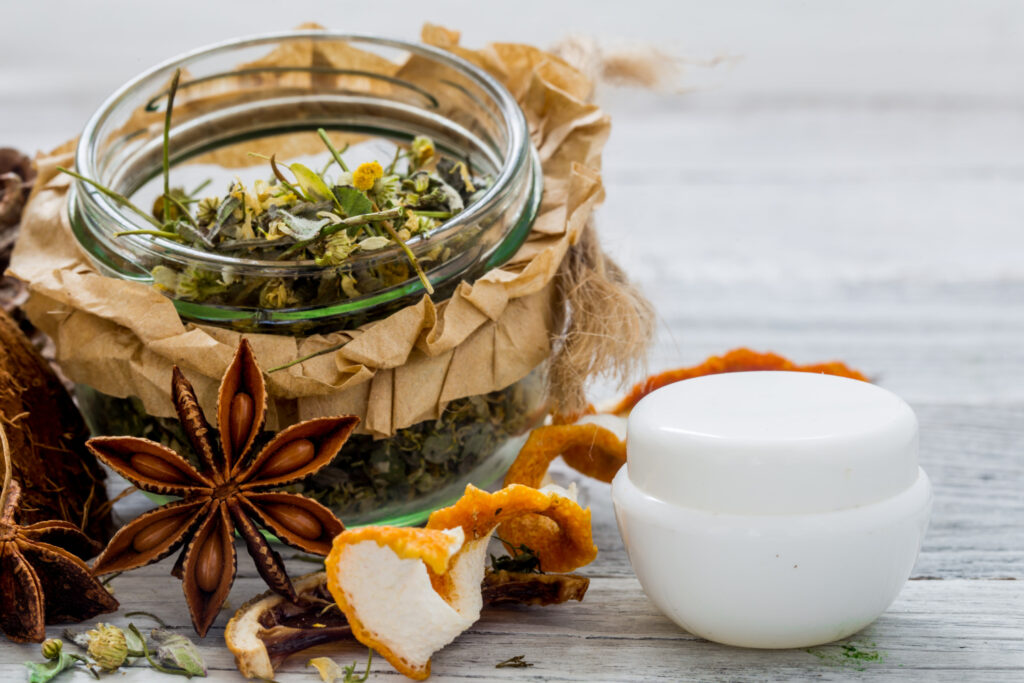Herbal salves are an adaptable and all-natural solution for a range of skin issues. For dry, irritated, or injured skin, these fatty, emollient therapies provide a soothing, healing solution that’s simple to produce at home.
What is a Salve?
Salves are semi-solid preparations created by infusing medicinal plants into a fatty foundation, usually oils and waxes. They are often referred to as balms or ointments. Plant extracts and healthy fats combine to form a layer that is protective and soothing on the skin, which can help with a variety of problems.
Benefits of Homemade Herbal Salves
Herbal salves can provide several benefits for the skin, including:
- Healing of Wounds: Herbal salves including calendula, comfrey, and St. John’s Wort can aid in the healing of small cuts, scrapes, and abrasions.
- Skin Soothing: Anti-inflammatory ingredients with calming effects on irritated, itchy, or inflamed skin include lavender, plantain, and chamomile.
- Moisturization: Oils and waxes’ fatty bases help keep moisture in and avoid dryness.
- antibacterial protection: Due to their inherent antibacterial properties, herbs such as tea tree and rosemary can help prevent infections.
- Targeted relief: Herbal salves can penetrate and absorb skin tissue quickly, resulting in the targeted alleviation of skin conditions as well as deeper tissues like muscles and joints.
- Natural and Non-Toxic: Herbal salves are a safer substitute for store-bought skin care products because they are created entirely of organic, natural components rather than artificial chemicals.
- Versatility: Herbal salves are useful for a variety of conditions, including minor cuts and skin irritations, respiratory support, muscle aches, and more.
Preparation Process
Making an herbal salve is a simple procedure that requires little experience or equipment. Simply follow these procedures to make your customized salve:
Infusion: Start by adding dried herbs into olive or coconut oil, or other carrier oils. This procedure enhances the medicinal qualities of the salve by removing the advantageous chemicals from the herbs.
Straining: Once the herbs have been infusing for a few weeks, filter the oil to get rid of any remaining plant material. This will leave your salve with a smooth, fragrant base.
Adding Beeswax: Pour melted beeswax into the infused oil to form a creamy mixture that cools and hardens. Additionally, beeswax serves as a natural preservative, extending the salve’s shelf life.
Essential Oils: Add essential oils to the salve mixture, such as chamomile or tea tree oil, for extra scent and health benefits.
Pouring and Cooling: Transfer the liquefied salve mixture into sanitized receptacles and let it cool and become solid before sealing.
Using Your Homemade Salve
Apply a small bit of your herbal salve to the damaged region and gently massage it in. That’s how to use it. Minor wounds, scratches, burns, dry skin, aches in the muscles, and more can all be treated with the salve. Your salve can be kept for up to 12 to 18 months in a dark, cool place.
You may harness the power of nature for the health and wellness of your skin by making your herbal salves. All you need is a few basic ingredients and some time to make a personalized, healthy treatment at home.
Herbs Used in Salves
Some of the popular herbs used in making herbal salves include:
Calendula (Calendula officinalis)
Known for its skin healing and anti-inflammatory properties.
Comfrey (Symphytum spp.)
Used to support wound healing and skin regeneration.
St. John’s Wort (Hypericum perforatum)
Provides anti-inflammatory and wound-healing benefits.
Lavender (Lavandula spp.)
Offers soothing, calming, and anti-inflammatory effects.
Plantain (Plantago spp.)
Helpful for treating minor wounds, bug bites, and skin irritations.
Chamomile (Matricaria recutita)
Has anti-inflammatory and skin-soothing properties.
Arnica (Arnica montana)
Used for bruises, muscle aches, and pain relief.
Tea Tree (Melaleuca alternifolia)
Provides antimicrobial and antiseptic benefits.
Rosemary (Rosmarinus officinalis)
Offers antimicrobial, anti-inflammatory, and respiratory support.
The findings of the search suggest that the exact herbs employed can be selected according to the intended therapeutic effects, which include pain reduction, skin nourishing, wound healing, and respiratory support.
Some popular herbal salves
Based on the information provided in the search results, here are some popular herbal salves and their uses:
Uses of Frankincense, Lavender, and Calendula Salve: Inflammation reduction, wound treatment, and skin healing.
Applications for Plantain, Yarrow, and Comfrey Salve: Minor cuts, scratches, and abrasions.
Salve with rosemary, thyme, and eucalyptus: uses include respiratory support, mucus clearance, and chest congestion relief.
Uses for Chickweed Salve: Relieving itchy, dry, or irritated skin
The uses of comfrey root salve include wound healing and skin regeneration support.
Uses for Goldenseal Root Salve: Offers antibacterial qualities to aid in infection prevention.
Uses for Oregon Grape Root Salve: Provides antibacterial properties for skin
Some popular carrier oils used in making herbal salves
Based on the information provided in the search results, some of the popular carrier oils used in making herbal salves include
Olive Oil
Mentioned as a typical oil for salves, light-colored olive oil is an excellent option in general. Even when heated, olive oil maintains its integrity longer than many other oils.
Coconut Liquid
One excellent choice for body care products, lip balms, and salves is fractionated coconut oil.
Sunflower Liquid
One good carrier oil to use when creating salves and oils infused with herbs is sunflower oil.
Almond Grease
It is claimed that sweet almond oil is a mild, emollient oil with anti-inflammatory and vitamin E-rich qualities.
Avocado Liquid
Avocado oil is known for its skin-nourishing and rejuvenating qualities; it is best derived from the fruit rather than the pit.
Oil from Apricot Kernels
Apricot kernel oil is a fantastic option for aging skin because it is even lighter than almond oil.
Jojoba Oil
One liquid oil that is recommended for use in facial skincare products that contain herbs is jojoba oil.
For the most health benefits, go for premium, organic, cold-pressed, or extra virgin types. The desired qualities and intended application of the herbal salve will determine which particular oils are utilized.
Measurement of Carrier Oils
Using the data from the search results, the following advice on accurately measuring carrier oils for creating herbal salves is provided:
Employ Volumetric Measurements
Carrier oils are frequently expressed in volume units like ounces or milliliters. Because oils vary in density relative to weight-based measurements, this makes recipe scaling and measurement easier.
Ascertain Sufficient Oil Coverage
Use enough oil to completely submerge and cover the herbs by at least 1-2 inches while infusing them with it. This makes it easier to guarantee that the herbs are fully infused and that the finished salve has the right consistency.
Concerning Oil Properties
The thicknesses, absorption rates and melting points of various carrier oils differ. Selecting oils with comparable qualities is crucial when changing out the original ones to preserve the desired texture and functionality of the salve.
Use a dilution of 2-3% essential oil
It is advised to dilute essential oils in the carrier oil by 2-3%, or 10–18 drops for every ounce of oil, before adding them to the salve. This makes it possible to make sure the essential oils are correctly diluted and won’t irritate the skin.
Modify Amounts as Necessary
You don’t always need to measure exactly, and you can add extra oil as needed to get the right consistency. To get the desired salve texture, it’s preferable to start with a basic amount and then modify the oil or wax ratios. You can guarantee the optimum consistency, absorption, and therapeutic advantages of your handmade herbal salves by according to these instructions for measuring and choosing carrier oils.

How to Store Herbal Salve Properly
Here are some suggestions for preserving herbal salves correctly based on the data found in the search results:
Keep it cold and dark
Herbal salves should be kept out of direct sunlight and heat sources by keeping them in a cool, dark place like a pantry or cabinet. This aids in maintaining the salve’s herb and oil potency and purity.
Make Use of Airtight Containers
To avoid contamination and oxidation, store the salve in sealed glass jars, metal tins, or other containers. Plastic containers should not be used to store salves, as the plastic may eventually seep into the product.
Keep Cold to Extend the Shelf Life
The search results recommend refrigerating herbal salves to maximize their shelf life, perhaps prolonging their usable life to a period of 12-18 months. This is particularly crucial for salves containing perishable materials like aloe vera or fresh herbs.
Containers with labels and dates
Each salve container should be clearly labeled with the contents, preparation date, and any other pertinent information. This aids in monitoring the salves’ age and freshness.
Keep in smaller quantities
Smaller amounts of salve are easier to use up before they go bad, so avoid creating and keeping huge batches of it. Aim to make only enough at a time to last three to six months.
Check for Signs of Spoilage
- Check your stored salves regularly for any indications of mold growth, discoloration, or modifications to texture or smell.
- It is advisable to throw away any salve that seems contaminated and produce a new batch.
You can make sure your handmade herbal salves stay safe, potent, and useful for longer by adhering to these storage instructions.

For more beauty tips, read: Impact of Sallow Skin and How to Improve It
Frequently Asked Questions (FAQs)
Are all skin types safe to use herbal salves?
Yes, all skin types—even sensitive skin—can safely use herbal salves. To make sure it’s compatible with your skin, you must do a patch test before using it extensively.
What’s the shelf life of herbal salves?
Herbal salves can be stored for up to a year in a cool, dark place that is kept out of the direct sun and moisture. To increase their shelf life, you can add natural preservatives like vitamin E oil.
Are herbal salves safe to apply to open wounds?
Despite the antibacterial and therapeutic qualities of herbal salves, it is advisable to speak with a healthcare provider before using them on open wounds. Certain herbs have the potential to irritate or obstruct the healing process.
Is it possible to alter the aroma of my herbal salve?
Of course! You can add extra therapeutic advantages to your herbal ointment and tailor its aroma by adding essential oils like citrus, peppermint, or lavender.
Are herbal salves known to have any negative effects?
Herbal salves seldom cause side effects, although anyone who is allergic to particular herbs or essential oils should proceed with caution. Should you encounter any negative reactions, stop using the product right away and, if required, get medical help.
Embracing Nature’s Wisdom
In summary, homemade herbal salves are a harmonious fusion of contemporary creativity and the knowledge of nature. Through the utilization of medicinal herbs, people can set off on a path towards comprehensive well-being. Making your herbal salves is a fulfilling project that gives you the ability to take charge of your health and well-being, regardless of your level of experience with herbal remedies.

